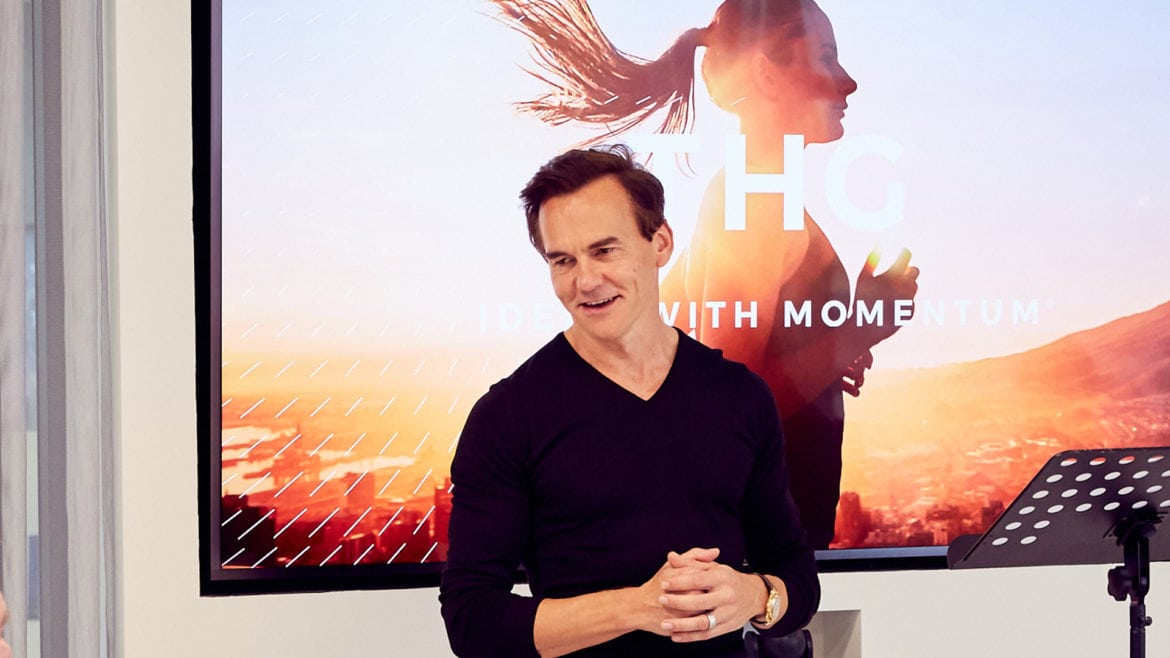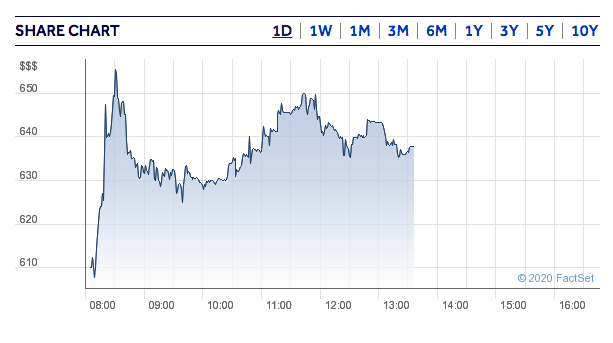
The Hut Group shares started trading on the London Stock Exchange (LSE) this morning after securing a £5.4 billion ($7 billion) valuation – one of the largest tech listings in the history of the British stock market.
Shares of The Hut Group (THG) were initially sold at 500p per share and they quickly soared during the morning – right after they were launched – to as much a 658.3p per share, although they have settled lower at 636p during this afternoon’s stock trading activity.

The firm was initially backed by private equity firm KKR but the fund has reportedly dumped its entire stake in THG. Other backers include Blackrock, Henderson Global Investors, and the Qatar Investment Authority, all of which have agreed to buy around £600 million in shares offered by the company headed by Matthew Moulding (pictured).
The Hut Group’s IPO could help London’s IPO market in making its comeback
The success of The Hut Group’s initial public offering (IPO) could motivate other firms in the UK – especially those within the tech space – to go public as well, as they can benefit from the momentum that the pandemic has created for businesses in different areas of the tech realm like cloud computing, software development, and e-commerce, all of which have been growing as a result of work-from-home policies and lockdowns.
Investment bank and financial advisors in the country – including Citi, JP Morgan, and Barclays – have already stated that they expect higher interest in IPOs in the country in the coming months as a result of THG’s debut.
Meanwhile, other analysts have voiced their concerns about the firm’s corporate governance, as Moulding – the firm’s founder – currently holds the positions of both Chief Executive and Chairman of the Board – which undermines the role of the Board of Directors in overseeing the actions of the executive branch of the firm.
This situation, although fairly common in the US market, is not standard practice in the UK, where the Board is usually regarded as a key piece of the puzzle when it comes to oversight.
“There wasn’t too much concern about this during the bookbuild – investors understand that the founder is a key part of the story”, said a source familiar with the matter to US news portal CNBC.
Are The Hut Group shares a buy now?
It is still too early to come up with a technical analysis for the online retailer as at least four weeks of price action should take place to start identifying potential patterns.
However, we can, for now, take a look at the firm’s performance and financials to see if the current price of the shares is presenting an opportunity for investors.
According to the firm’s 2019 annual report, THG sales have grown from £736m in 2017 to roughly £1.14 billion by the end of last year. Meanwhile, the firm’s EBITDA has also moved higher from £69m to £111m, which represents almost a 10% EBITDA margin.
Sales within Europe account for 60% of the firm’s revenues with the UK at the top of the list, comprising 34% of THG’s total sales.
Meanwhile, the firm gross profit margin ended last year at 45% – which is a nice percentage – while operating expenses represented 17.1% of THG’s total revenues.
Finally, the firm posted a statutory loss of £43 million last year along with an adjusted profit – which excludes exceptional items – of £1.4 million, with primary exclusions including elements like share-based compensation and extraordinary administrative and distribution expenses.
Since the firm is not yet posting solid earnings, the best way to establish a valuation is to use its sales by using a ratio known as price-to-sales. Based on the IPO’s valuation, that ratio would be around 4.7, which is not excessive for a firm that is close to post a profit.
That said, THG exhibits a level of indebtedness that investors should keep an eye on, as the firm accumulates roughly £511 million in long-term liabilities for total assets of £1.6 billion.

Question & Answers (0)